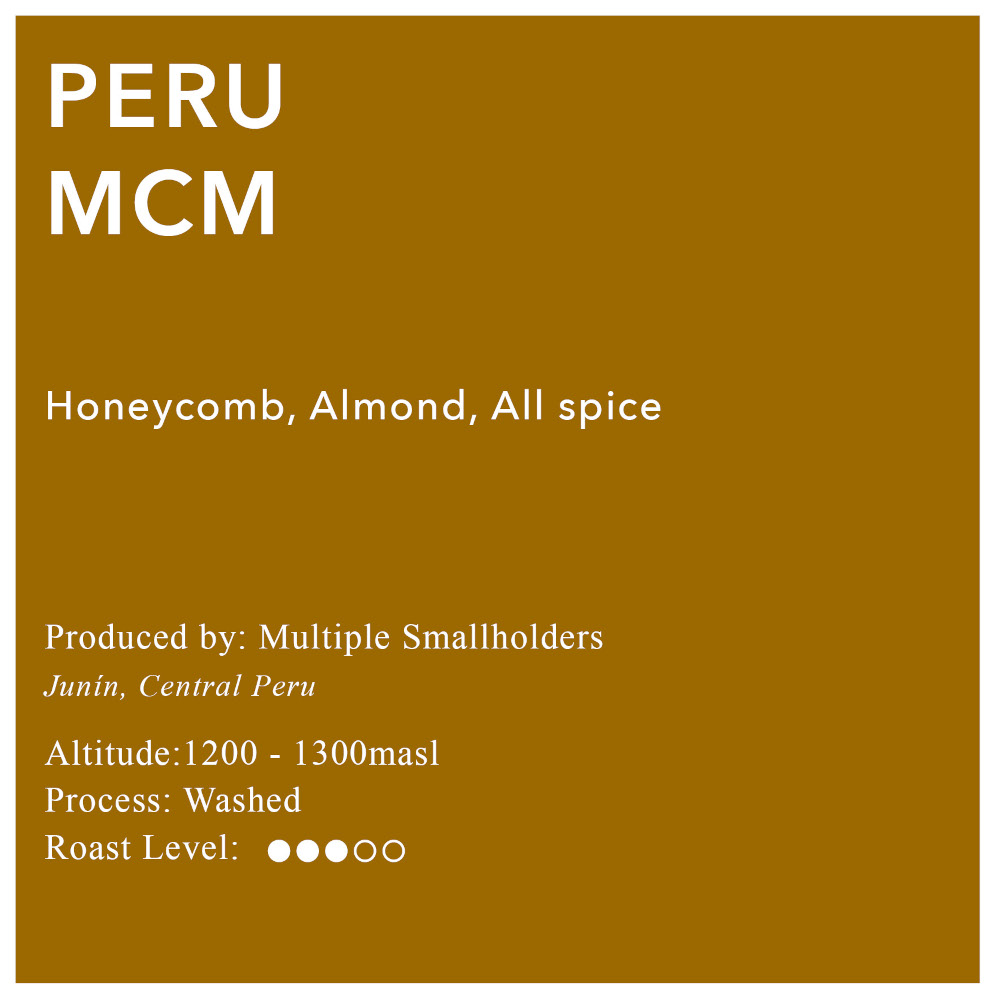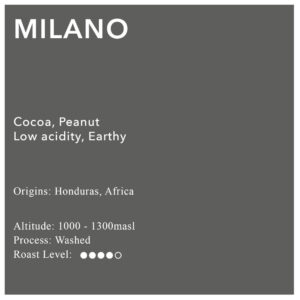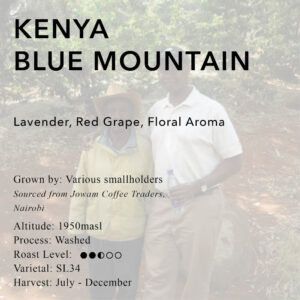Flavour Notes
Recommended Brewing Method
Country
Process
Region
Elevation
Peruvian MCM – SHB
From the aroma you can really tell this is going to be a sweet coffee. As you take a sip, there is a honeycomb taste that really stands out. Carried through on that honeycomb is a touch of acidity that really excites the taste buds. The honeycomb is joined by notes of vanilla to really season the coffee. All of this is carried through on a beautiful silky body. Peru has four main coffee growing regions with Junin (where Peru MCM is cultivated) lying in the middle of the country close to its capital, Lima.
Arabica coffee has been cultivated in Junin for around 50 years. The plantation is situated at high altitudes which gives it the ‘SHB’ status. SHB stands for ‘Super Hard Bean’, this is when the elevation stints growth of the bean and prolongs the process of maturity and increases density. It is grown in the shade to also increase flavour and slow the growth. The combination of altitude and shade-grown conditions allows the coffees to mature at a slower rate, allowing the natural sugar present in the beans to develop more fully and, as a result, create flavours that are richer.
A Short History of Coffee Production in Peru
Coffee was introduced to Peru in the 1700s by Ecuador, but wasn’t commercially exported until the late 19th century. After two centuries, the typica variety makes up for 60 percent of the country’s exports. Production increased significantly after the 20th century, when Peru transferred over 2 million hectares of land to Britain over an unpaid loan. A quarter of this was used for coffee production, which is when this export became one of Peru’s top earners. Fast forward to 2014 and Peru was ranked one of the top 20 coffee produces in the world and coming fifth in the export of Arabica. Peru may also be responsible for the the future of coffee, as the high elevation that other areas of the country offer could shelter the coffee plants from the effects of global warming. Where other countries may suffer, Peru could benefit from this temperature increase and dominate exports from South America.
RELATED PRODUCTS
Related products
-
Dark Roast Espresso
- £8.00 – £21.00
- Select options This product has multiple variants. The options may be chosen on the product page
-
Milano Blend
- £21.00 – £75.00
- Select options This product has multiple variants. The options may be chosen on the product page
-
Kenya Blue Mountain Jungle Estate
- £10.00 – £28.00
- Select options This product has multiple variants. The options may be chosen on the product page






1 review for Peru MCM
Peter B (verified owner) –
I’m not a connoisseur but I like what I like and I like this one. I have been buying it regularly and brew it in an Aeropress.